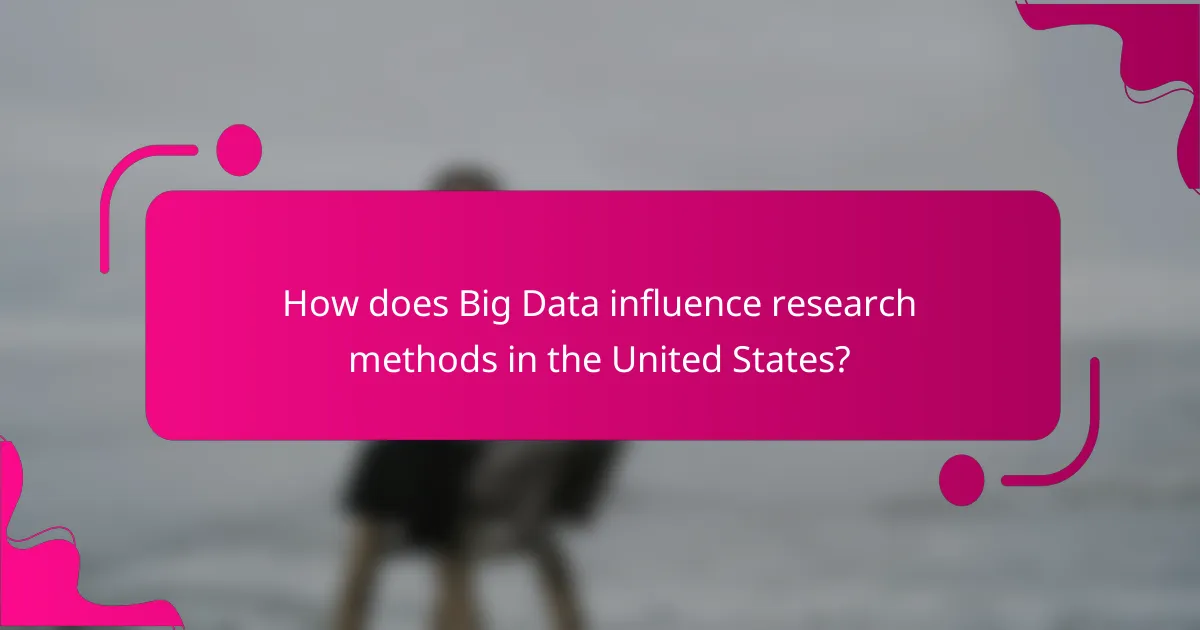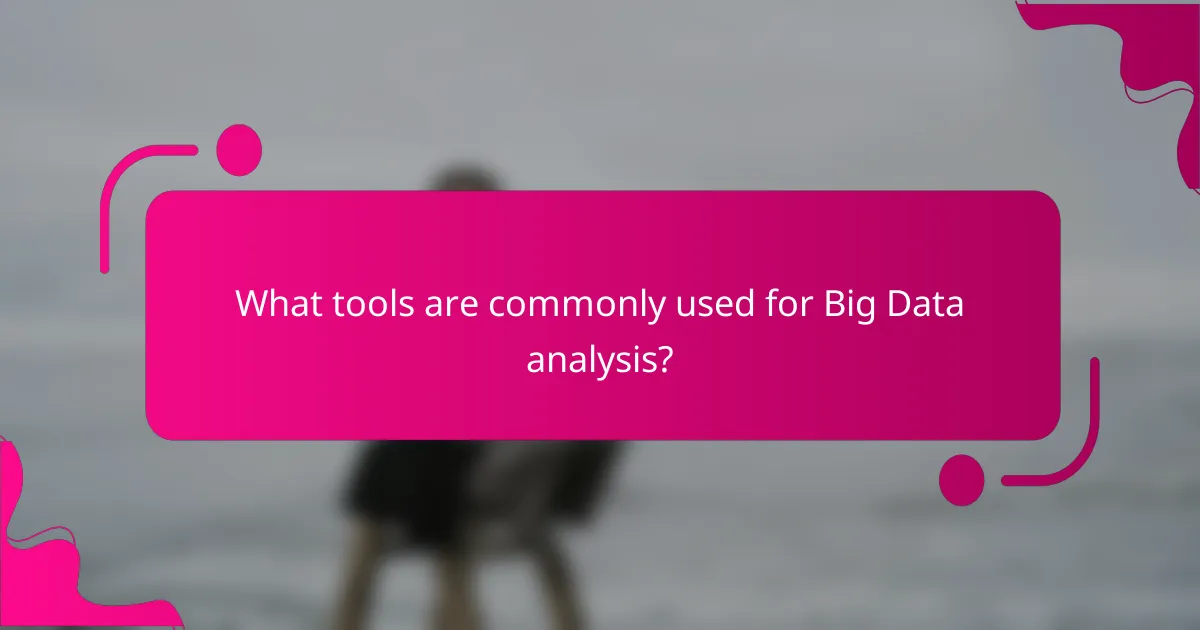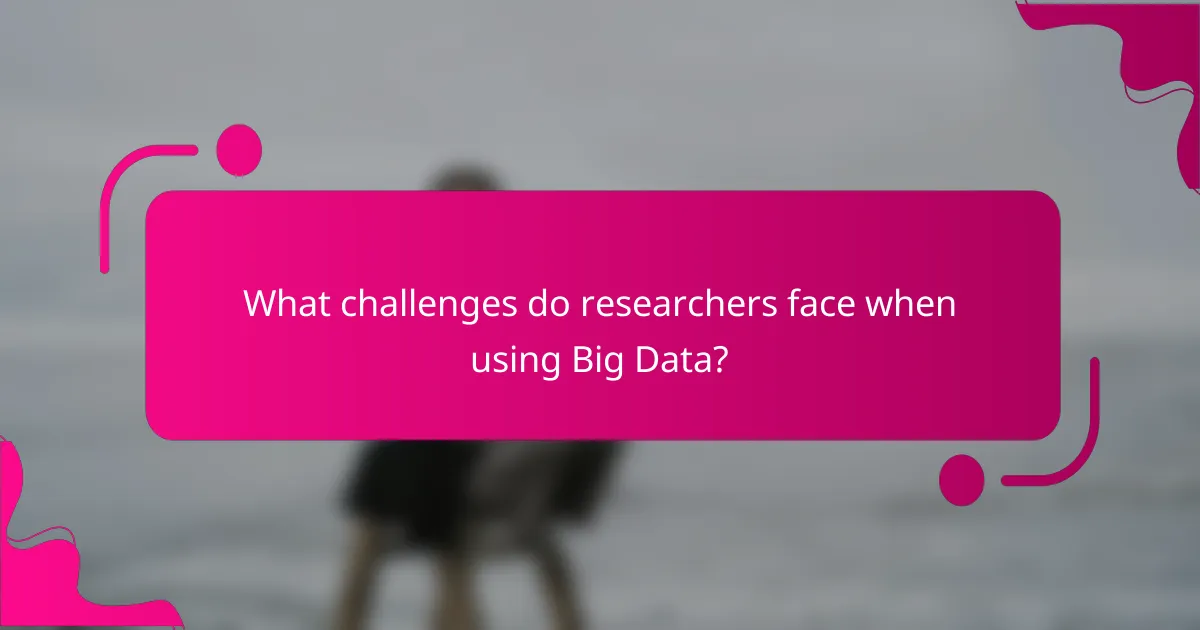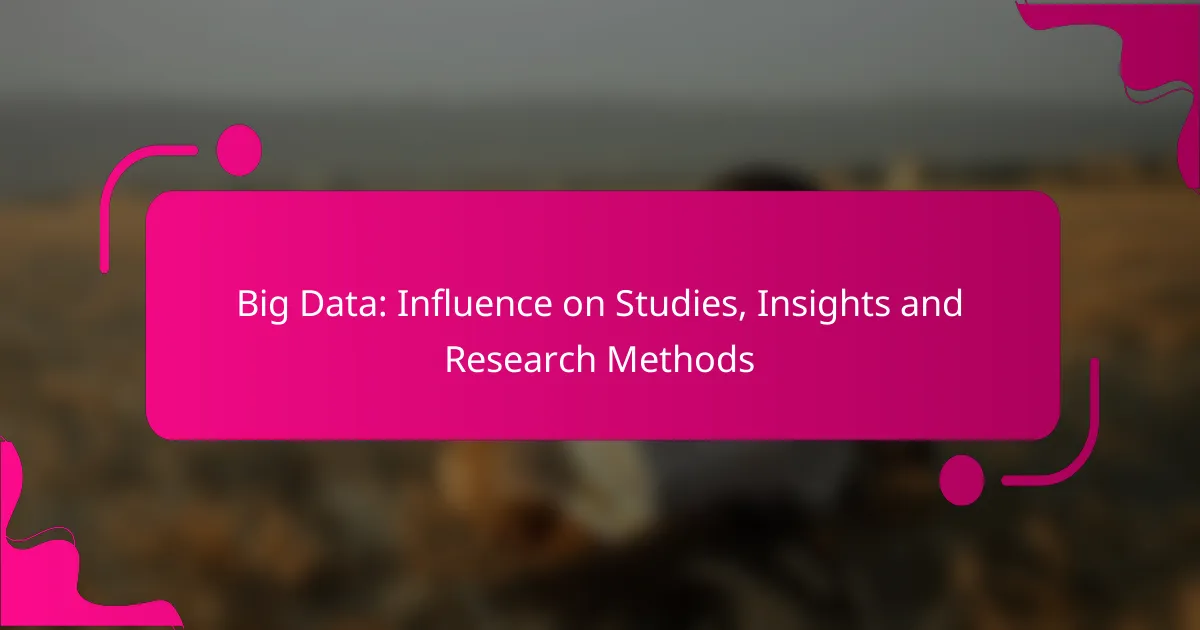Big Data is revolutionizing research methods by facilitating extensive data collection and advanced analytical techniques, which yield timely and relevant insights. By harnessing vast datasets, researchers can enhance the accuracy of their studies and draw more informed conclusions, ultimately improving the quality of their findings.

How does Big Data influence research methods in the United States?
Big Data significantly transforms research methods in the United States by enabling more comprehensive data collection, advanced analytical techniques, and timely insights. Researchers can leverage vast datasets to enhance the accuracy and relevance of their studies, leading to more informed conclusions.
Enhanced data collection techniques
Big Data allows researchers to utilize various sources for data collection, including social media, sensors, and online databases. This multifaceted approach enables the gathering of diverse information, which can lead to richer insights. For instance, surveys can be supplemented with real-time social media sentiment analysis to better understand public opinion.
Additionally, tools like web scraping and automated data harvesting have become commonplace, allowing researchers to collect large volumes of data quickly. However, it’s crucial to ensure compliance with data privacy regulations, such as the CCPA, when collecting personal information.
Improved data analysis capabilities
The advent of advanced analytics tools and machine learning algorithms has revolutionized how researchers analyze data. These technologies can process complex datasets at scale, uncovering patterns and correlations that traditional methods might miss. For example, predictive modeling can help identify trends in health research, leading to proactive measures in public health.
Researchers should consider the trade-offs between complexity and interpretability when choosing analytical methods. While sophisticated models may yield better predictions, simpler models often provide clearer insights that are easier to communicate to stakeholders.
Real-time insights generation
Big Data enables the generation of real-time insights, allowing researchers to make timely decisions based on current data. This capability is particularly valuable in fields like epidemiology, where understanding the spread of diseases in real-time can inform public health responses. For example, tracking flu outbreaks through social media can lead to quicker interventions.
To effectively harness real-time data, researchers should implement robust data management systems that can handle continuous data streams. It’s also essential to establish clear protocols for data validation to ensure the accuracy of insights derived from rapidly changing datasets.

What are the key benefits of Big Data in academic studies?
Big Data significantly enhances academic studies by providing vast amounts of information that lead to more reliable insights and findings. Researchers can leverage this data to improve the quality of their research methodologies and outcomes.
Increased accuracy of findings
Big Data allows researchers to analyze extensive datasets, which improves the accuracy of their findings. By utilizing advanced analytical tools, studies can identify patterns and correlations that smaller datasets might miss.
For example, in medical research, analyzing millions of patient records can lead to more precise conclusions about treatment effectiveness, reducing the risk of false positives or negatives.
Broader sample sizes
With Big Data, researchers can access larger and more diverse sample sizes, which enhances the generalizability of their findings. This is particularly beneficial in fields like social sciences, where understanding varied demographics is crucial.
For instance, a study on consumer behavior can incorporate data from thousands of sources, including social media and online transactions, providing a comprehensive view of trends across different populations.
Data-driven decision making
Big Data fosters data-driven decision making, enabling researchers to base their conclusions on empirical evidence rather than assumptions. This approach leads to more informed and effective strategies in research design and implementation.
Academics can utilize predictive analytics to forecast trends and outcomes, which is especially useful in fields like economics and environmental studies. For example, analyzing historical climate data can help predict future environmental changes, guiding policy decisions.

What tools are commonly used for Big Data analysis?
Common tools for Big Data analysis include Apache Hadoop, Tableau, and SAS, each serving distinct purposes in data processing, visualization, and statistical analysis. These tools help organizations manage and derive insights from large datasets efficiently.
Apache Hadoop
Apache Hadoop is an open-source framework that allows for the distributed processing of large data sets across clusters of computers. It utilizes a simple programming model and is designed to scale up from a single server to thousands of machines, each offering local computation and storage.
Key components of Hadoop include the Hadoop Distributed File System (HDFS) for data storage and MapReduce for processing. Organizations often choose Hadoop for its ability to handle vast amounts of unstructured data, making it suitable for tasks like log analysis and data warehousing.
Tableau
Tableau is a powerful data visualization tool that enables users to create interactive and shareable dashboards. It connects to various data sources, allowing for real-time data analysis and visualization, which helps in making data-driven decisions.
With its user-friendly interface, Tableau is particularly popular among business analysts who may not have extensive programming skills. It supports drag-and-drop functionality, making it easy to create visual representations of complex data sets.
SAS
SAS (Statistical Analysis System) is a software suite used for advanced analytics, business intelligence, and data management. It provides a comprehensive platform for data manipulation, statistical analysis, and predictive modeling.
Organizations often use SAS for its robust analytical capabilities, especially in industries like healthcare and finance where regulatory compliance is crucial. Its ability to handle large datasets and perform complex statistical analyses makes it a preferred choice for data scientists and analysts.

How do researchers ensure data privacy with Big Data?
Researchers ensure data privacy with Big Data by implementing various strategies that protect personal information while still allowing for valuable insights. Key methods include data anonymization and strict adherence to privacy regulations.
Data anonymization techniques
Data anonymization techniques involve removing or altering personal identifiers from datasets to prevent the identification of individuals. Common methods include data masking, where sensitive information is replaced with fictional data, and aggregation, which summarizes data points to obscure individual entries.
Researchers often use differential privacy, which adds random noise to datasets, ensuring that the output does not reveal information about any single individual. This technique is particularly useful in statistical analysis, where maintaining the integrity of the data while protecting privacy is crucial.
Compliance with regulations like GDPR
Compliance with regulations such as the General Data Protection Regulation (GDPR) is essential for researchers handling Big Data in Europe. GDPR mandates that personal data must be processed lawfully, transparently, and for specific purposes, ensuring individuals’ rights are respected.
Researchers must implement measures such as obtaining explicit consent from data subjects and ensuring that data is stored securely. Regular audits and impact assessments are also recommended to maintain compliance and address any potential risks associated with data handling practices.

What challenges do researchers face when using Big Data?
Researchers encounter several challenges when utilizing Big Data, including issues related to data quality, integration of various data sources, and the high costs associated with data storage. These obstacles can significantly impact the effectiveness and efficiency of research outcomes.
Data quality issues
Data quality issues arise when the information collected is inaccurate, incomplete, or inconsistent. Poor data quality can lead to misleading insights and unreliable conclusions, making it crucial for researchers to implement robust data validation processes.
To mitigate data quality problems, researchers should establish clear data collection protocols and regularly audit their datasets. Utilizing automated tools for data cleansing and validation can also help maintain high standards of data integrity.
Integration of disparate data sources
Integrating disparate data sources can be a complex task, as researchers often deal with information from various formats and systems. This challenge requires careful planning and the use of advanced data integration techniques to ensure compatibility and coherence.
Researchers can benefit from employing data integration platforms that facilitate the merging of different datasets. Additionally, adopting standardized data formats can streamline the integration process and enhance overall data usability.
High costs of data storage
The high costs of data storage can be a significant barrier for researchers, especially when dealing with large volumes of data. Expenses can accumulate quickly, particularly when using cloud storage solutions or maintaining on-premises infrastructure.
To manage storage costs effectively, researchers should evaluate their data retention policies and consider archiving less critical data. Utilizing cost-effective cloud services with tiered storage options can also help optimize expenses while ensuring data accessibility.
